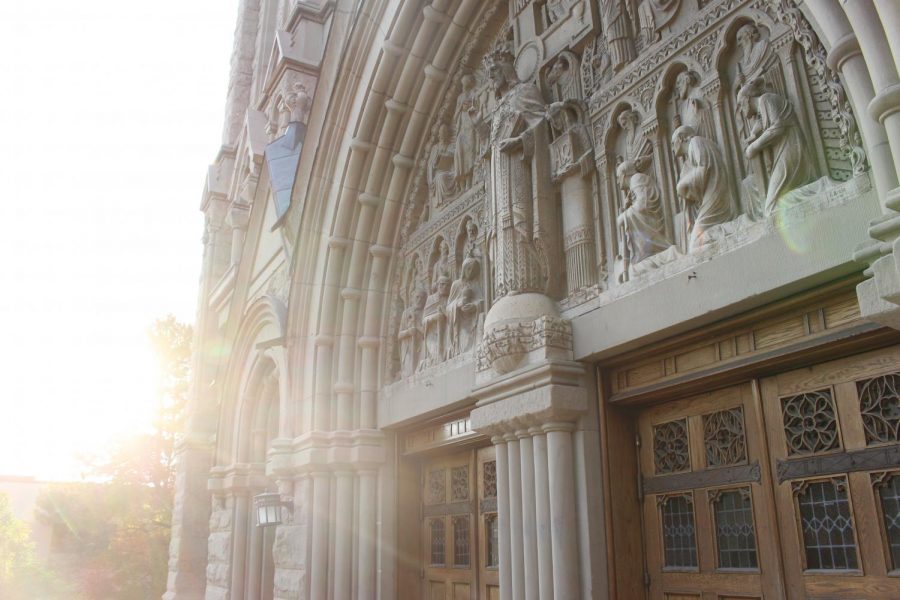Faith Through Fear: How Students’ Worship Adapted to a Global Pandemic
Cathedral of the Madeleine in Salt Lake City photographed on August 28th, 2020. (Photo by Gwen Christopherson | The Daily Utah Chronicle)
November 18, 2020
When freshman communications major Lauren Johnson contracted COVID-19, her quarantine in the University of Utah Guest House became a test of faith.
As an anxious person, Johnson struggled through isolation and turned to her religion, Christianity. When she prayed, Johnson would ask God one simple question — why? It was only when Johnson attended a virtual service from her home church did comfort come to her in the form of Hebrews 11:1.
“‘Faith is the assurance of things hoped for, the conviction of things not seen,’” Johnson said. “I don’t know why that just stuck out to me. I think it’s just because faith is like this solo thing … either your faith is going to get worse or it’s going to get better in this time of isolation.”
For Johnson, the pandemic greatly affected her relationship with Christianity. Since middle school, religion has played a large role in her life, however, bible studies and attending church regularly were not an option through the pandemic.
“In December I had gotten so, so, so close to church, like I went every single Sunday,” Johnson said. “And then in March, I couldn’t go to church and it was super upsetting because that was my all-time high of being super close to God.”
Stuck at home, Johnson found herself sleeping in instead of attending virtual Zoom services. The lure of Netflix overwhelmed her desire to sit with her Bible. Podcasts became easier than prayer.
After moving from Georgia to attend the U, Johnson was able to attend an in-person service. Now, she says she’s been reconnecting with her faith.
“It feels super weird because I know everyone else is going through it like it’s not just me, but it’s really crazy to find a difference,” she said. “It’s hard to find a happy medium when I just went from [a point where] my religion was kind of struggling, but it’s very nice to be able to go to Bible studies in person and actually go to church.”
Johnson attended a few online services over the course of the pandemic but said the connection was different.
Beck Ritzel, a freshman business major and practicing Roman Catholic felt similarly about his experience with Zoom Mass. While the message was there, Ritzel and his family couldn’t receive Eucharist, or Communion, which is a primary focus in Mass.
“[Eucharist is] the number one thing,” Ritzel said. “It was just a little weird like we got everything still, but it was like we kind of missed it.”
Ritzel’s home church in California started holding Mass outside, including a special time only for the elderly. But, as Mass became a hassle to attend, Ritzel said friends began to distance themselves from their faith.
“I’d say I got probably closer [to my religion] if anything because my family definitely prayed more and then did more together, and family’s also a very big thing. My family’s very very big on our religion,” Ritzel said.
For Ritzel, family and faith are interconnected. Most of Ritzel’s friends he met through attending church events, and his family has remained close with other church members. When things become overwhelming, Ritzel looks to them.
For others, Ritzel advises sticking to what you believe in to find peace.
“Just stick with it,” he said. “Stick with what makes you feel comfortable. That’ll get you through.”







